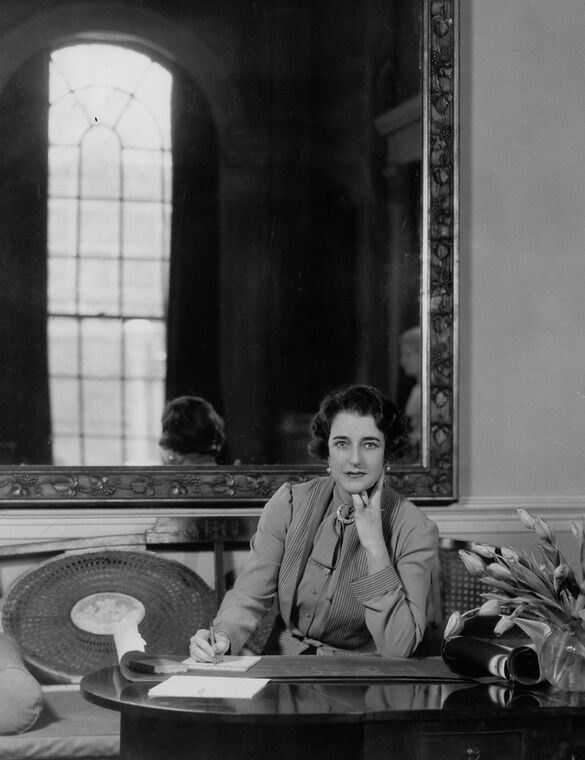Known as the “duchess of decorating,” Dorothy Draper was the ultimate maximalist. She was born into the wealthy Tuckerman family in 1889, and her childhood saw her moving between stately turrets in Tuxedo Park, a large town house in Manhattan, and a cottage in Newport, Rhode Island. Her cousin Eleanor Roosevelt sometimes came over for tea.
Dorothy came out in 1907 and was married five years later to the handsome young doctor George “Dan” Draper. Despite a busy social calendar, she yearned for more. At the same time, it became clear she had a knack for decorating. When Draper experimented with a room, her friends would go back to their own estates and copy her.
A tumultuous split with her husband in 1930 changed everything. He went off with a younger woman; she went to therapy and a plastic surgeon. Draper’s new nose was a definite turning point. And her developing designer’s eye was fed up with the dispiriting palette of gray, brown, and black. These colors were just “gravy.” It was time for something new. She struck out on her own.
“Lovely, clear colors have a vital effect on our mental happiness,” Draper mused. The Carlyle hotel, on Manhattan’s Upper East Side, was one of her first projects, and it struck a chord that was bold yet balanced. Then the assignments began to pour in—apartments, houses, hotel interiors. In 1941, Draper designed the Camellia House dining room in Chicago’s Drake Hotel. In 1942, as W.W. II ravaged Europe, Draper traveled to Brazil, where she ran a $10 million redesign of the extravagant Palácio Quitandinha, in Rio de Janeiro. Then came her magnum opus, in 1948, the Greenbrier hotel, in West Virginia.
A tumultuous split with her husband in 1930 changed everything. He went off with a younger woman; she went to therapy and a plastic surgeon.
Draper’s design dogmas were strict and uncompromising. She chucked out clutter, used black-and-white tiles for energy, adored Baroque motifs blown up to huge scale, and employed color unforgettably. Her work is emblematic of the Hollywood Regency style.
In The Draper Touch, a new book by the late Carleton Varney, a protégé of Draper’s who bought her company in 1964, five years before she died, archival photographs and illustrations provide a look into her dazzling life. Draper “conveyed a glamorous, bright and cheerful attitude,” writes Varney, “despite the chaotic and dark times.” —Elena Clavarino
Elena Clavarino is an Associate Editor for AIR MAIL












